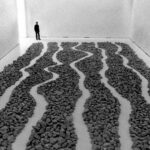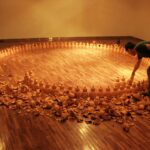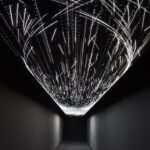
Welcome to Kosmorganica
Immersive, sensorial, harmonic,
and metaphysical
Kosmorganic is a portmanteau of ‘Kosmos’ and ‘organicism’. Kosmos with a ‘K’ refers to the physical universe and the patterned nature of all domains of existence from matter to mind to an ultimate supreme being. Organicism refers to the Pythagorean school and Plato’s theory of cosmology found primarily in Timeaus. It holds the position that the universe is alive and intelligent constructed of perfect harmonies and consciousness. Humans are microcosms of the macrocosmic universe. [ figure 1 ] Kosmorganic aesthetics conceptually cluster areas that have been vaguely identified and for the most part named in the past few decades.
Many newcomers will need to pivot their approach to their travel habits and how they navigate the world. Modernity has created blind spots that first need to be unveiled. The information age has exacerbated the situation with its emphasis on external, cognitive/linguistic intelligence. [ see outer/inner intelligences ]To widen this limited vision of the world is no easy task since the obstacles of a clear vision have calcified for nearly five centuries. A decline in inner, consciousness, intelligence, of the last couple of decades, has enlarged the blind spot. Globality[1] and climate change have catalyzed an amalgamation of eastern and western aesthetics that appear in many forms of Kosmorganica. See travel tips to locate Kosmorganica.

Escape into Ecosophy
All day tour

Attend a ritualistic performance

Immerse in a Frequency Bathing
Explore adventurous territory with pioneers, Thomas Wilfred [ figure 2 ] and the Whitney Brothers. By the 1950s this region of Kosmorganica has expanded into more fields under the headings of experimental architecture, immersive environments, sound art, multisensory rooms, and ritualistic performance art. A few notable locals include Tadao Ando, Céleste Boursier-Mougenot, Janet Cardiff, Group Zero, Yayoi Kusama, La Monte Young, Wolfgang Laib, and James Turrell. [ figure 3 ]
Travel Tip
Navigating Kosmorganica
To identify Kosmorganica, the visitor may make the mistake and keep one foot inside the chaotic postmodern logic of surfaces and styles. It may be a challenge to loosen the postmodern grip of labeling art by its external physicality while visitors experience Kosmorganica sights. Contemporary art continues to be categorized according to its external or materialistic expression, such as immersive, monumental, minimal, fiber, ambient, installation, etc. Whereas, before Postmodernism, art was labeled by philosophical reflection. (e.g. Naturphilosophie, Sublime, Surrealism, Fauvism, Romanticism, Symbolism, Impressionism, Baroque, Mannerism, etc.). If you can keep your internal intelligences in mind, you will have an easier time locating Kosmorganica.
Otherwise, art categories serve as road signage to point the visitor in the right direction. With hundreds of categories in contemporary art and no official consensus of definitions, one can predict the outcome. The visitor may mistake the reception desk, litter, space construction, a computer rebooting on a projection for art. Perhaps, this may not be a mistake, since art can also serve as a means to erase existing constructs and redefine our world.
[1] Sociologist Martin Albrow explains that as of the 1960s humanity has entered a Global Age which proceeds the Modern Age. It is marked by a phenomenological lens and trans-historical discourse. He explains that the Global Age is beyond the term ‘globalization’ and ‘globality’. Five characteristics mark the Global Age: climate change, weapons of global destruction with the H-bomb, global communication systems with the internet, globe not nations becomes frame of reference. Albrow, M. (1996). The global age: State and society beyond modernity. London: Polity Press. p.4, 79.
